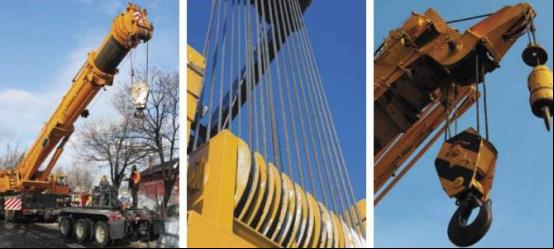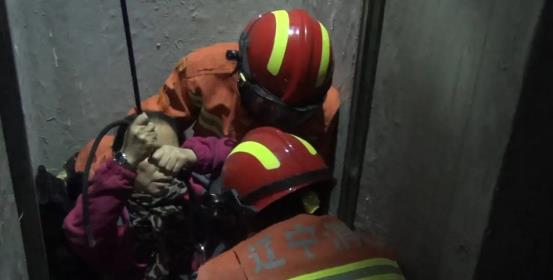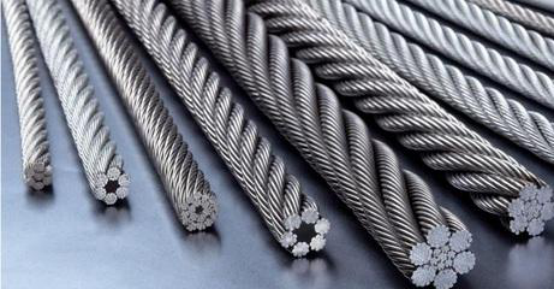
+86 755 23057280
English
Wire rope as the increase in the material handling machinery, traction, taut and bearing of flexural member, such as high strength, light weight, good flexibility, stable and reliable under dynamic load and overload ability and working at high speed under the condition of operation and winding the advantages of no noise, in the construction, mining, metallurgy, transportation, tourism, and other national economy is widely applied in major industries and departments. However, in the actual use process, due to the wear between each wire, rope strand and between the wire rope and the traction wheel groove, the service life of the wire rope is often affected to a certain extent, and even the phenomenon of fracture may occur, which poses a certain threat to the life and property of the masses.

On December 12, according to news reports, chaoyang city, liaoning province fire rescue station received the fire alarm, Renmin road rescue team is located in chaoyang city jianping international hotel near a sells janitorial services outlets room one fall cellar warehouse, fire rescue station immediately dispatched rescue truck 1, 5 fire commanders and rushed to the scene to implement the rescue. After 17 minutes of on-site rescue, the old man was successfully rescued by firefighters and transferred to the 120 waiting at the scene and sent to the hospital for treatment. According to the inquiry on the scene, the victim was a 60-year-old woman. She was entering the cellar on her own freight elevator before the accident. However, the wire rope of the elevator suddenly broke and fell into the cellar about 4 meters deep.

Similar accident to happen from time to time, in order to avoid the occurrence of wire rope fracture, in addition to pay attention to the correct loading and unloading of steel wire rope and daily maintenance, product quality should be more strict control cable and understand its fatigue life, the following is according to YB/T4288 “elevator wire rope fatigue test method” and GB/T12347 "wire rope fatigue test method" to make a brief introduction of the methods to determine the bending fatigue life of wire rope.
1. Test scope
This method is suitable for the determination of the bending fatigue life of the elevator traction wire rope.
2. Test principle
The steel wire rope sample is used to simulate the actual working condition of elevator operation, and the test wheel (traction wheel) is bypassed with a certain envelop Angle, the tension is applied to it, and the bending is repeated at a certain frequency, so as to evaluate the performance of the steel wire rope under bending fatigue.
3. Sample preparation
3.1 The sample of steel wire rope shall comply with GB 8903 and relevant standards. The length of the sample shall be determined according to the specification of steel wire rope and the structure of the testing machine.
3.2 The sample shall be intercepted from the wire rope qualified in appearance inspection, and both ends of the sample shall be fastened with soft metal wire or special chuck before interception.
3.3 Before the test, the surface stains should be removed from the sample.

4. Test apparatus
WANCE wire rope bending fatigue testing machine
Bending fatigue machine adopts horizontal structure defect, the test wheel, guide wheel, wheel load, counting device, driving system and loading system, control system and other parts, through the simulation sample in the actual working condition of the elevator wire rope, to exert tension test specimen, the reverse bend at a certain frequency, used to determine the wire bending fatigue performance.

1. Horizontal structure, easy to install wire rope test;
2. Pneumatic loading, continuously and automatically adjustable;
3. Variable frequency motor speed regulation;
4. Large screen display and touch screen input;
5. independent counter, accurate count.
2. Test wheel
Ductile iron is generally selected as the material of the test wheel. The hardness of the test wheel is 220HBW~260HBW, and the hardness deviation of the inner surface of the wheel groove shall not be greater than 15HBW.If there are special requirements, other materials or hardness test wheels can also be used.There are three kinds of groove types of test wheel: U groove with notch, U groove and V groove, as shown in Figure 1.In general, a u-shaped groove test wheel with notches is used.The pitch diameter of the test wheel is 40 times of the nominal diameter of the wire rope. The size of other guide wheels should not be larger than that of the test wheel. The test wheel and other guide wheels should rotate flexibly.The dimension deviation of the test wheel shall conform to the provisions of GB/T12347, the dimension of the test wheel groove shall conform to the provisions of GB7588 and GB/T24478, and the groove Angle and notch Angle shall generally be 40° and 90°, respectively.

5. Test Parameter
5.1 Tension
5.2. Angle
5.3 Test frequency
5.4 Test times
5.5 Elongation
6. Test procedures
The test is generally carried out in the room temperature range of 10℃ ~ 35℃, and the temperature of arbitration test is 23℃±5℃.
Install the wire rope sample on the test machine, fix the end, apply tension, then mark the effective length, and measure the actual diameter of the straight line part at the same time.The marked part is the wire rope section around the test wheel, and the marked length is 2.5 times the pitch circle diameter of the test wheel during the arbitration test.
Start the power supply and reset the counting device back to zero.
Start the testing machine, stop it once every 24h after running, and the stop time should not exceed 30min.Observe the section of the wire rope bypassing the test wheel, inspect the breaking condition of the wire rope with visual inspection or wire rope flaw detector, and measure the rope diameter and the effective length of the rope mark until the specified number of test cycles is completed. The test shall be stopped if the number of broken wires or broken strands is reached in the relevant product standard or agreement during the test.
After the end of the test, loosen the rope clips at both ends of the wire rope, gently remove them from the test machine, and make the wire rope spread without bending. Select the length of a twist cut at the most serious damage of the wire rope (a twist length is about 6.5d, where D is the nominal diameter of the wire rope and the unit is mm), check and record the number of broken wires.